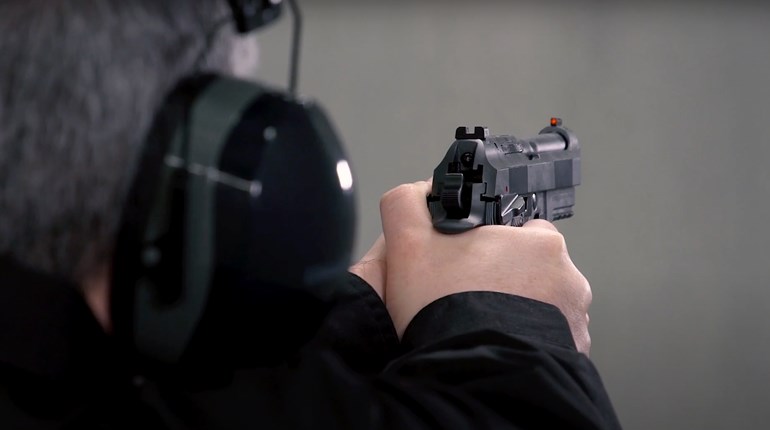
It was both the most demanding and most dangerous form of waterfowl hunting. And yes, some hunters died doing it. They called it punt gunning--a punt being a small, flat-bottomed boat. Punt guns were used during the 1800s and early 1900s, resulting in the mass slaughter of waterfowl. Upwards of 100 ducks, geese and swans could be killed with just one shot!
State hunting laws and the federal Migratory Bird Treaty Act of 1918 finally outlawed use of the big guns, but during their heyday they were very much a part of legal waterfowl hunting. The guns were especially favored by market hunters.
A punt gun, in essence, was an exceptionally large muzzleloading shotgun, weighing as much as 200 pounds and measuring 10 to 12 feet in length. Its bore diameter could be two inches, and shoot two pounds of shot. Obviously, punt guns were not fired from the shoulder. Instead, the big guns were usually mounted in a skiff, 16 to18 feet long, and the boat and gun rowed or paddled to the flocks of birds.
Punt guns were usually used at night, the darkness helping conceal the approach of the boat and hunter from the birds. The hunt began once a large flock of rafting waterfowl was sighted. Lying in the boat alongside the big gun, the hunter would keep any wind to his back and stalk the birds by using small hand-paddles to slowly and silently propel the skiff forward.
Once within range-usually about 50 yards-the hunter would aim the punt gun by sighting along the side of the barrel and shifting his weight slightly forward or backward. By moving forward, the gun's muzzle would lower and by moving backward it would rise. Before touching off a shot, the hunter would intentionally bump the gunnel of the skiff with one of the paddles or make some other subtle but unnatural sound. This caused the birds to raise their heads in the split second before the shot, resulting in the killing or wounding of as many waterfowl as possible.
Early punt guns were flintlocks, and the hunter closed his eyes and turned his head away from the gun as he pulled the trigger, protecting himself from the flash of gunpowder igniting in the lock's firing pan. This also shielded his eyes from the much larger flash that instantly emanated from the guns' muzzle, preserving his night vision. Many early flintlock punt guns were eventually converted to percussion cap, a much more reliable ignition system given the damp conditions of waterfowling.
As can be imagined, the roar of such a gun on a still, black night over open water was deafening. One hunter referred to his punt gun as his “headache gun” because he said he took two aspirin before firing it and two again afterward.
The big guns were dangerous, not only to waterfowl, but to the hunters themselves. The guns' recoil was fierce, and if not properly controlled could damage the skiff in which the gun was mounted-even knocking out the boat's transom and drowning the hunter. The guns recoiled with such force that they would slide backwards several feet following a shot and at times break ribs in the skiff. To prevent this, a plank-known as a kick board-was nailed to the ribs. Several burlap bags filled with sea oats also helped cushion the gun's recoil.
One of the most successful punt gun hunts ever recorded happened on America's eastern seaboard the night four boats hunted together. “You could hear the redheads ‘meowing' the same as a bunch of cats as we got our guns ready,” remembered market hunter Ray Todd. “There was a solid roar like thunder every time they flew. As the sun set, we skiffed right down its path at a flock of redheads, over a half-mile long and nearly as wide.”
Todd said that all four punt guns fired simultaneously and it literally rained ducks-a total of 419 redheads were killed. “The birds flew off a short distance and began to feed again. We made three more shots that night. By morning we had killed over 1,000 ducks. They brought $3.50 a pair in Baltimore, and it was the best night's work we had ever done.”
Each punt gun had a specific name--Bundick, Snead, Cheseldine, Dutch Mike, etc.--generally the name of the family who originally built and owned the gun. When the guns were finally outlawed, many of their owners didn't give them up easily. Hidden in hollow trees or chimneys, many were discovered and confiscated by the law. Some of those same punt guns are on display in museums yet today.
A figure of speech remains in our language from the era of punt gunning. When we prepare for a project, we often talk of “getting our ducks in a row.” And that's literally what punt gunners used to do before touching off a shot from their infamous, deadly guns.






































